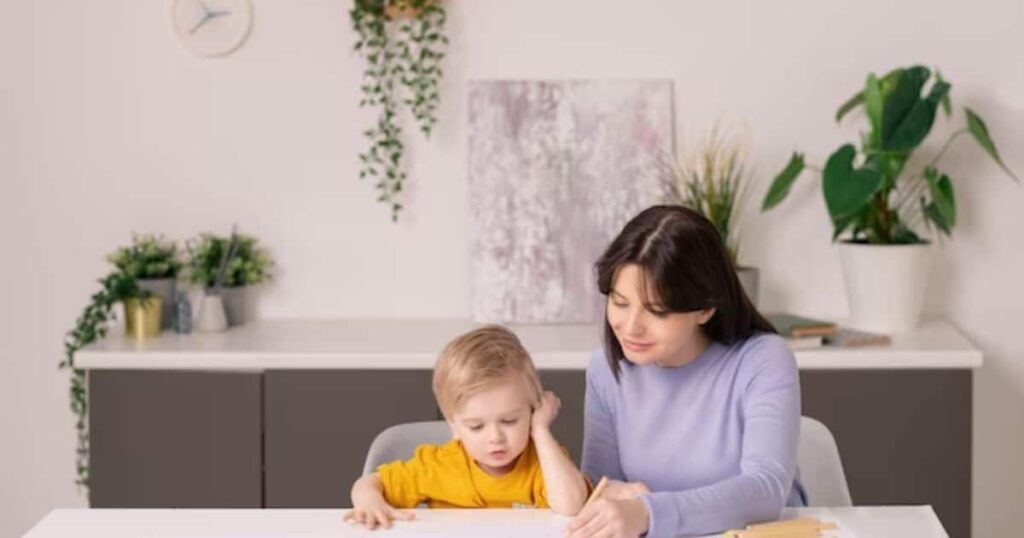Sleep Training 11-month-old involves implementing techniques to establish healthy sleep patterns in infants who are around 11 months of age. It is a method employed by parents to help their little ones learn to sleep independently, regulate their sleep cycles, and develop a consistent sleep routine. This process aims to promote better sleep for both the baby and the parents, fostering a more relaxed and predictable bedtime routine.
Sleep Training 5 Month Old may initially sound challenging, but it’s a transformative approach for parents seeking a more restful night’s sleep. By instilling positive sleep habits early on, parents can create an environment conducive to better sleep quality for their 11-month-olds. Establishing a consistent bedtime routine and addressing sleep associations can contribute to improved sleep duration and quality. Sleep Training 11 Month Old is a valuable tool for parents navigating the unique challenges of their child’s sleep development during this critical stage of infancy.
Your 11 Month Old Baby’s Sleep: What You Can Expect
At this stage of development, you can anticipate certain changes in your baby’s sleep routine, including a gradual transition from multiple naps to a more consolidated nap schedule. Additionally, your 11-month-old may be showing signs of increased independence in falling asleep and staying asleep through the night.
As your baby approaches the first year of life, you can expect a more predictable sleep pattern to emerge. Some infants may be sleeping through the night more consistently, while others may still require occasional nighttime care. It’s a time when parents can observe and respond to their baby’s evolving sleep needs, fostering a supportive environment for healthy sleep habits.
Tips to Help Your 11 Month Old Sleep Like a Champ

Helping an 11-month-old sleep well involves establishing a consistent bedtime routine and creating a comfortable sleep environment. Here are some tips to help your 11-month-old sleep like a champ:
Consistent Bedtime Routine:
Establish a regular bedtime routine to signal to your baby that it’s time to wind down. This could include activities like a warm bath, reading a book, or singing a lullaby.
Set a Regular Bedtime:
Stick to a consistent bedtime each night. This helps regulate your baby’s internal clock and promotes a more restful sleep.
Create a Comfortable Sleep Environment:
Ensure the room is dark, quiet, and at a comfortable temperature. Use blackout curtains if necessary to block out light.
Comfortable Bedding:
Use comfortable and safe bedding. Make sure the crib mattress is firm, and avoid soft bedding or toys that could pose a suffocation risk.
Limit Stimulating Activities Before Bed:
Avoid stimulating activities close to bedtime. Reduce screen time, loud play, or other activities that may excite your baby.
Encourage Self-Soothing:
Encourage your baby to learn self-soothing techniques. This may involve letting them fall asleep on their own, gradually reducing assistance in settling them to sleep.
Offer a Bedtime Snack:
A small, healthy snack before bedtime, such as a small serving of yogurt or a banana, can help stave off hunger during the night.
Ensure Enough Daytime Sleep:
Make sure your baby is getting enough sleep during the day to prevent overtiredness at night. Naps are crucial at this age.
Comforting Objects:
Introduce a comfort object, like a soft blanket or a favorite stuffed animal, to provide a sense of security.
Stay Calm During Night Wakings:
If your baby wakes up during the night, remain calm and soothing. Avoid engaging in stimulating activities that might make it harder for them to fall back asleep.
Positive sleep associations

Positive sleep associations refer to creating and reinforcing positive, calming, and consistent cues or rituals around bedtime to help promote healthy sleep habits in infants and young children.
These associations can become signals that signify it’s time for sleep, making the bedtime routine more predictable and enjoyable for both parents and children. Positive sleep associations are essential for establishing a healthy sleep routine and can contribute to longer and more restful sleep for the child. Here are some examples and explanations:
Comfort Items:
Introducing a soft blanket, a favorite stuffed animal, or a special sleep toy can provide comfort and familiarity. The presence of these items can become a positive sleep association, signaling to the child that it’s time for sleep.
Consistent Bedtime Routine:
Following a consistent bedtime routine creates a series of events that act as cues for sleep. This routine could include activities like a warm bath, changing into pajamas, reading a bedtime story, or singing a lullaby. The predictability of the routine helps signal to the child that bedtime is approaching.
Soft Lighting:
Dimming the lights during the bedtime routine helps create a calming atmosphere. This change in lighting signals to the child that it’s time to wind down. Using soft, low-level lighting can contribute to a relaxing environment.
Gentle Music or White Noise:
Playing soft and soothing music or using white noise can become a positive sleep association. This auditory cue can help drown out background noise and create a consistent and calming atmosphere for sleep.
Cuddling and Affection:
Providing cuddling and affection before bedtime creates a positive association with going to sleep. This physical connection can be reassuring for the child and contribute to a sense of security.
Creating a Comfortable Sleep Environment:
Ensuring that the sleep environment is comfortable, with a well-chosen mattress, soft bedding, and an appropriate room temperature, helps establish positive associations with the physical space where the child sleeps.
Transition Objects:
Some children find comfort in having a transitional object, like a small blanket or a favorite stuffed animal, that they can take to bed with them. This object becomes associated with bedtime and can provide a sense of security.
Encouraging Self-Soothing Techniques:
Teaching and encouraging your child to self-soothe can be a valuable positive sleep association. This might involve allowing them to fall asleep on their own, gradually reducing assistance in settling them to sleep.
Create a plan for your 11 or 12 month old

Creating a plan for your 11 or 12-month-old involves considering various aspects of their daily routine, including feeding, napping, playtime, and bedtime. Here’s a sample table outlining a daily plan for an 11 or 12-month-old:
| Time | Activity |
| 7:00 AM | Wake up |
| 7:30 AM | Morning feeding (breast milk or formula) |
| 8:00 AM | Playtime and exploration |
| 9:30 AM | Morning nap (usually 1-2 hours) |
| 11:30 AM | Mid-morning snack (solid foods) |
| 12:00 PM | Playtime and sensory activities |
| 1:00 PM | Afternoon feeding (solids and/or breast milk/formula) |
| 2:30 PM | Afternoon nap (usually 1-2 hours) |
| 4:30 PM | Snack time |
| 5:00 PM | Outdoor play or interactive play |
| 7:00 PM | Begin bedtime routine: bath, pajamas, storytime |
| 7:30 PM | Bedtime |
| 12:00 AM (if needed) | Night feeding (breast milk or formula, if applicable) |
How many naps should an 11 month old take?

At 11 months old, most babies typically transition from three naps to two naps per day. However, the exact number of naps can vary from one baby to another, as individual sleep needs and patterns differ. Here’s a general guideline:
Two Naps (Typical):
Many 11-month-olds are on a two-nap schedule, taking one morning nap and one afternoon nap. Each nap may last around 1 to 2 hours.
Possibility of One Nap:
Some babies may naturally transition to just one longer nap during the day, usually in the afternoon. This transition to a single nap usually occurs around 12 to 18 months.
It’s important to pay attention to your baby’s cues and adjust their nap schedule accordingly. Signs that your baby might be ready to transition to one nap include consistently resisting the morning nap or having difficulty falling asleep for the second nap.
Why are my 11 month old fighting naps?
Around 11 months old, some babies may start resisting or fighting naps due to a variety of reasons. One common factor is increased curiosity and a desire for exploration. As babies become more mobile and interested in the world around them, they may resist naps to stay engaged with their surroundings.
Additionally, developmental milestones such as learning to stand, walk, or talk can contribute to increased energy and a reluctance to settle down for sleep. Separation anxiety may also play a role during this age, making it challenging for babies to relax and nap when they would rather be close to their caregivers. It’s essential for parents to be patient and empathetic, recognizing that these behaviours are often a natural part of a baby’s developmental journey.
To address nap resistance, creating a consistent and calming bedtime routine can help signal to the baby that it’s time to wind down. Providing a comfortable sleep environment, minimising distractions, and ensuring that the baby is not overtired can also contribute to a more successful nap routine.
Understanding and responding to the baby’s individual needs, including adapting nap schedules based on their cues, can go a long way in establishing positive sleep habits and promoting more peaceful training nap times. If the resistance to naps persists or becomes a concern, consulting with a paediatrician can provide additional insights and guidance tailored to the baby’s specific situation.
Is my 11 month old baby ready to drop a nap?
Around 11 months old, some babies might exhibit signs indicating their readiness to drop a nap, transitioning from two naps to one. A common indication is consistent resistance to one of the naps, particularly the morning one.
If your baby is showing increased ability to stay awake for longer periods without becoming overly tired or cranky, it may suggest they are ready for an adjustment in their nap schedule. Pay attention to your baby’s individual sleep patterns and behaviors, as readiness for this transition varies among children.
However, it’s essential to note that there’s no strict timeline for nap transitions, and every baby is unique. Some babies continue with two naps until closer to 15 or 18 months. If your 11-month-old is still taking two naps and seems content, there’s no rush to make a change. On the other hand, if you observe signs of readiness, you can gradually adjust the nap schedule by extending wake times or pushing back the morning nap. As always, consult with your pediatrician for personalized advice based on your baby’s specific developmental needs and sleep patterns.
What are some activities I can do with my 11 month old?

Spending quality time with your 11-month-old can be both fun and beneficial for their development. Simple activities can include playing with soft toys, introducing colorful books with large pictures, and singing nursery rhymes together. You can also engage in peek-a-boo games, which babies often find delightful. Allow your baby to explore different textures by providing safe, baby-friendly items with varied surfaces to touch and feel.
Another enjoyable activity is gentle bouncing or swaying to music, which not only entertains but also promotes a sense of rhythm. For a bit of messy fun, you can try finger painting with non-toxic, washable paints on large sheets of paper. Going for short strolls in a stroller or spending time in a safe, enclosed outdoor space can provide a change of scenery and fresh air. Additionally, letting your baby explore their reflection in a safe mirror can be fascinating for them. Always remember to closely supervise these activities to ensure a safe and enjoyable experience for your little one!
What time should an 11 month old go to bed?
The ideal bedtime for an 11-month-old baby often falls between 6:00 PM and 8:00 PM, depending on their individual sleep patterns and family routines. Most babies at this age require around 12 to 14 hours of sleep per day, including nighttime sleep and naps. Establishing a consistent bedtime routine, such as a warm bath, reading a book, or singing a lullaby, can help signal to the baby that it’s time to wind down.
It’s essential to pay attention to your baby’s individual cues and adjust the bedtime accordingly. If your baby consistently wakes up at a certain time in the morning, you can work backward to determine an appropriate bedtime. Additionally, ensuring that your baby is well-rested during the day with age-appropriate naps contributes to a smoother bedtime routine.
Remember that these are general guidelines, and every baby is unique. If you have concerns about your baby’s sleep or need guidance on establishing a suitable bedtime routine, consult with your pediatrician for personalized advice based on your baby’s specific needs and development.
Is there an 11 month sleep regression?

While some parents may observe changes in their baby’s sleep patterns around the age of 11 months, it’s not universally recognized as a distinct “sleep regression” phase like those that often occur around 4 months or 8-10 months. Sleep regressions are periods when a baby who has been sleeping well experiences a sudden change in sleep behavior, often characterized by more frequent night waking or difficulty falling asleep.
Around 11 months, some babies may go through developmental milestones, such as learning to stand or walk, which can impact sleep. Separation anxiety may also become more pronounced, causing babies to wake up during the night seeking reassurance from caregivers. Teething can also play a role in disrupted sleep patterns.
To navigate potential sleep disruptions around 11 months, maintaining a consistent bedtime routine, ensuring a comfortable sleep environment, and responding to your baby’s needs with soothing reassurance can be helpful. If sleep disturbances persist or cause significant concern, consulting with your pediatrician can provide additional insights and guidance tailored to your baby’s specific situation. Keep in mind that sleep patterns can vary widely among infants, and flexibility in response to your baby’s unique needs is key.
FAQ’s
How do I get my 11 month old to sleep alone?
Gradually transition your 11-month-old to solo sleep by establishing a consistent bedtime routine, creating a comfortable sleep environment, and encouraging self-soothing techniques, allowing them to learn to fall asleep independently.
Will baby learn to sleep without training?
Yes, many babies naturally learn to sleep without formal sleep training as they mature and their sleep patterns naturally develop.
What age is hardest to sleep train?
The age that is often considered hardest to sleep train is around 18 months when toddlers may experience separation anxiety and increased defiance.
How do I teach my baby to sleep independently?
To teach your baby to sleep independently, establish a consistent bedtime routine, create a comfortable sleep environment, and gradually encourage self-soothing by allowing them to fall asleep on their own while providing reassurance.
At what age do babies start sleeping on their own?
Babies can start sleeping on their own in a crib from birth, but the transition to independent sleep is often encouraged around 4 to 6 months of age.
Conclusion
Sleep training for an 11-month-old involves implementing techniques to establish healthy sleep patterns, fostering independence, and creating a consistent bedtime routine. While there’s no strict sleep regression at 11 months, developmental milestones, separation anxiety, and teething may affect sleep. Understanding typical sleep patterns for an 11-month-old helps parents anticipate changes and make informed decisions.
To help your baby sleep well, create a consistent bedtime routine, address sleep associations positively, and monitor developmental milestones. Additionally, engaging in age-appropriate activities and consulting with your pediatrician can contribute to a smoother sleep journey. Remember, every baby is unique, so be patient, stay consistent, and adapt your approach as needed.










